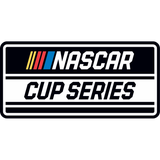
NASCAR decisions in spotlight amid Corey LaJoie-Kyle Busch incident, Bubba Wallace fine
If drivers are unsure of what they can or can't do on the racetrack, the past couple of weeks showed clarity. Or at least some clarity.
To recap:
--Layne Riggs was held two laps for retaliating against Stefan Parsons during the Nashville truck race. NASCAR Senior Vice President of Competition Elton Sawyer said Tuesday that Riggs already had been talked to by the series director about questionable moves so NASCAR decided to hold him for two laps.
--Bubba Wallace was fined $50,000 for door-slamming Alex Bowman on the Chicago cool-down lap. Sawyer indicated the fact that Bowman's wheels came off the ground as the result of the contact and that was something that they could not have repeated.
--Chase Elliott was not fined for slight contact, at most, with Daniel Suarez on the Chicago cool-down lap. NASCAR did talk to him, Sawyer said, but felt it was a much different situation than Wallace-Bowman.
"Two completely different scenarios," Sawyer said. "Chase accelerates to get up to the 99 [of Suarez]. We've seen that for many, many years. ... Very slight contact."
--Corey LaJoie was not fined for contact with Kyle Busch as they diced for position following a restart at Pocono Raceway. NASCAR will talk with LaJoie for what it considered a racing incident. As LaJoie mentioned on his "Stacking Pennies" podcast, in a racing series with rules on avoidable contact, he would have been penalized for avoidable contact.
"We let the guys race," Sawyer said.
So did NASCAR get it right? For the most part, it did.
The penalty on Riggs is one of those that NASCAR hasn't used all that often. Sawyer said NASCAR likes to review those things if there is any question of intent and therefore issue any penalty a couple of days later (as it did with a fine and points penalty to Carson Hocevar for actions during the Cup race two days later). I'd say that NASCAR might be able to use the two-lap penalty more as a deterrent, and it'd be OK to give the benefit of the doubt to drivers who have earned it through the way they've raced. And for those who have had questionable pasts, maybe not so much.
By not fining Elliott, NASCAR in some ways has set the line — slight contact is OK while not-slight contact is not. The question is what is the line between what is acceptable and not enough? My guess is that is one of those "we'll know it when we see it" type of deals.
The difficulty in the Elliott-Suarez situation is that Elliott did drive toward Suarez and at the least harassed him after the race. If done on its own after a race, nothing would be thought of it. In light of the Wallace fine, maybe a smaller fine to Elliott could have helped the optics of the decision.
Wallace car owner Denny Hamlin believes optics were the reason for the fine in the first place — that because Wallace did it with the cameras focused on him, NASCAR had to react. I'd think any social media uproar might make NASCAR do more analysis of a situation to see if it is more noise than fact, but whether it dictated the penalty in this situation, I'm skeptical.
Not penalizing LaJoie was definitely the right call. He made a very questionable move and probably should have lifted. But it wasn't like LaJoie shipped Busch on purpose in retaliation. If a driver frequently makes mistakes that cause big wrecks, NASCAR can address that through its racing approval process.
But drivers shouldn't be worried about making a mistake or deciding whether to lift if they are being blocked or racing for position — the "penalty" in those situations often is the crash that results (albeit in LaJoie's situation he was able to continue) or the way the driver on the receiving end races the aggressor in the future.
In other words, there are still times when this is a self-policing sport rather than needing Sawyer and his officials getting involved. The LaJoie-Busch accident fits that mold.
Bob Pockrass covers NASCAR for FOX Sports. He has spent decades covering motorsports, including over 30 Daytona 500s, with stints at ESPN, Sporting News, NASCAR Scene magazine and The (Daytona Beach) News-Journal. Follow him on Twitter @bobpockrass.




